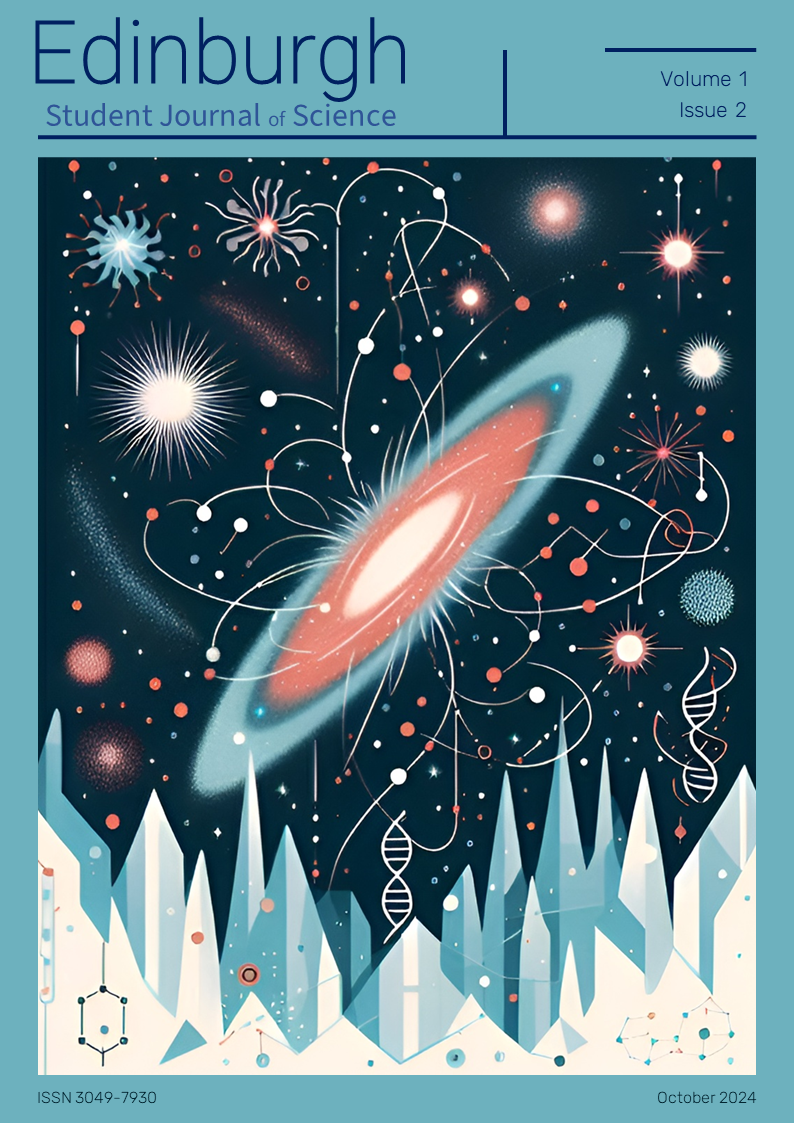A Topological Investigation of the Cosmic Web Formation
DOI:
https://doi.org/10.2218/esjs.9988Keywords:
Cosmology, Cosmic Web, N-body SimulationsAbstract
N-body simulations of the evolution of the large-scale structure of the universe (the Cosmic Web) were run while altering attractive gravity laws and initial conditions, in order to infer which properties of the universe are revealed by its current large-scale topology. The Cosmic Web was found to develop regardless of the gravitational alteration made. Significantly altering the initial conditions from Gaussian distribution ones was found to eliminate the Cosmic Web. Thus, we require small random perturbations in otherwise uniform initial conditions in the early universe, under an attractive gravitational force, for the Cosmic Web to develop.
Downloads
References
Angulo, R. E. and Hahn, O. ‘Large-Scale Dark Matter Simulations’ Living Reviews in Computational Astrophysics 8 1 (2022)
Bond, J. R. et al. ‘How Filaments of Galaxies Are Woven Into the Cosmic Web’ Nature 380 6575 (1996)
Martizzi, D. et al. ‘Baryons in the Cosmic Web of IllustrisTNG - I: Gas in Knots, Filaments, Sheets, and Voids’ Monthly Notices of the Royal Astronomical Society 486 3 (2019)
Poisson, S. ‘Mémoire Sur La Théorie Du Magnétisme En Mouvement’ (L’Académie royale des sciences de l’Institut de France 1827)
Rein, G. ‘Collisionless Kinetic Equations From Astrophysics - the Vlasov-Poisson System’ in Handbook of Differential Equations: Evolutionary Equations (2007)
Stücker, J. O. ‘The Complexity of the Dark Matter Sheet’ (2019)
Downloads
Published
Issue
Section
License
Copyright (c) 2024 Eva Maria Staikou, Marcos Pellejero

This work is licensed under a Creative Commons Attribution 4.0 International License.




